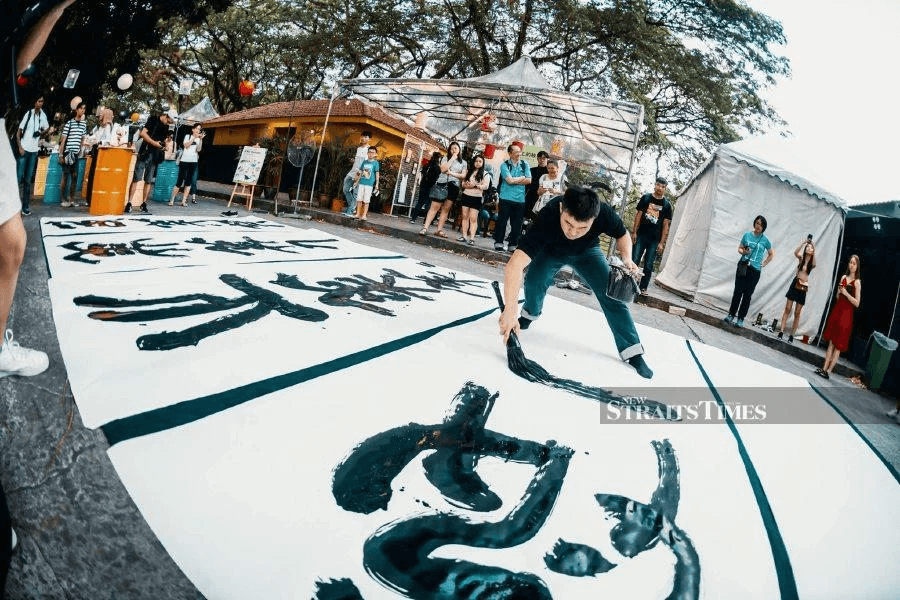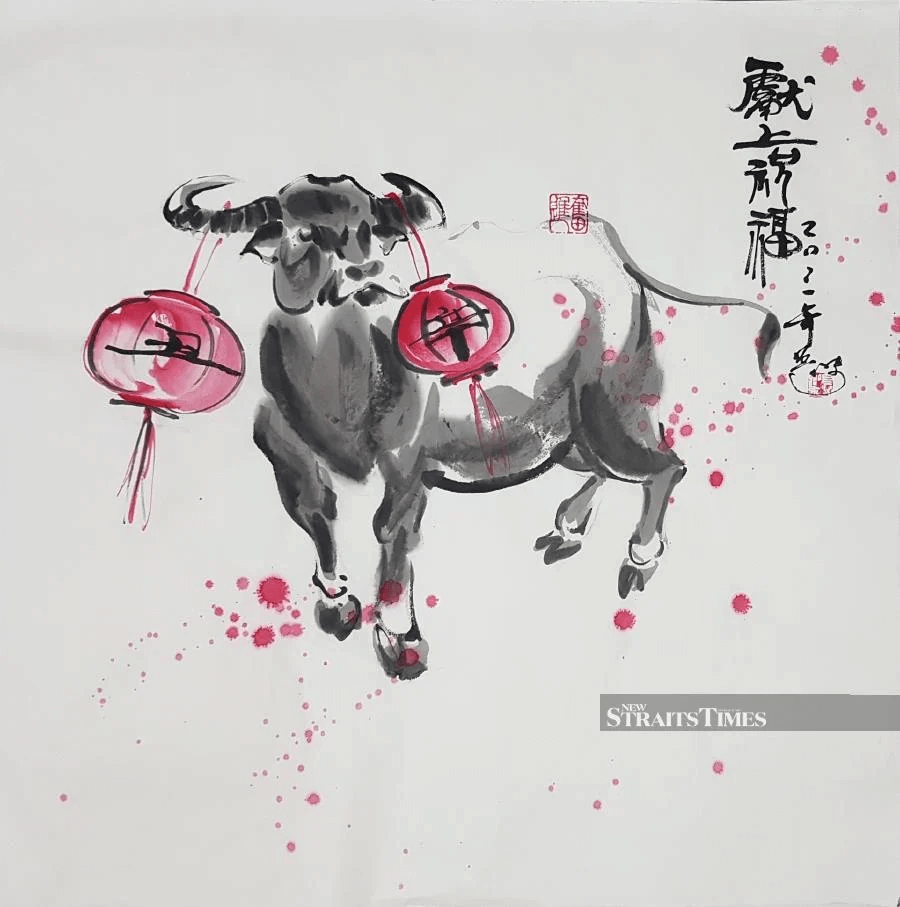Columns of Chinese characters done with a meticulous hand fill up the wall behind him, and he presides over them all like a benevolent Master, dressed in a sombre dark shirt complete with slicked back hair.
There’s something inherently deep about the ancient scribal language of Chinese calligraphy. Calligraphy ranked alongside poetry in China as a medium of self-expression and cultivation.
The soft, flexible hairs of the brush, the carbon in the ink and the spontaneity of the movement of the character (letter) portrayed are regarded as the essence or spirit of the calligraphic art.
In China, painting, poetry and calligraphy were the dream team of art and were called the “three perfections”.
Discussions about any of them were framed in the same terms: rhythm, touch, tone, spiritual energy. And calligraphers like Tee were adept at each.
Like the masters of old, Tee has delved deep into the ancient artform by channelling his inner Qi to come up with evocative visual works — a discipline he has honed for more than two decades.
But he is quick to dispel his mystical aura.
“My hair has grown out and it’s rather long,” he admits, raising his hand self-consciously to pat his head. “My last appointment with the barber was in September last year!”
With my Shaolin Master imagery shattered to smithereens, I swiftly move on to more current subjects: Tee’s latest art project with Intermark Mall in Kuala Lumpur.
The calligraphy master will be adding his touch to the mall’s Chinese New Year decorations. The “Ox-picious Blossoms” at the Intermark Mall is inspired by the grandeur of ancient Chinese arts, especially calligraphy.
More than that, Tee is excited about the Chinese Calligraphy Art Exhibition held at the mall.
With the theme focusing on the Year of the Ox, Tee’s 34 artworks will focus on the year’s zodiac symbol.
The ox, he tells me, is seen as a source of strength and is greatly valued in Chinese culture.
Many people mistakenly suppose that it is impossible to appreciate calligraphy without knowing the language it represents.
This belief fails to take into account the essentially abstract nature of most great calligraphy, in which the literal meaning of the characters is just one component of the meaning of the image.
The more you know, the more you can get out of a calligraphic text, but there’s much for the layman to appreciate.
Even those who do know Chinese are often unable to read major Chinese calligraphic works. But ignorance of languages is no reason to avoid this material. There is much beauty in this often-underrated artform.
Because calligraphy had distant roots in pictographs distilled from natural forms, both writing and painting are thought to be hardwired to nature itself — its energy flowed from the body, through the brush and into the ink.
The resulting strokes and lines are akin to a polygraph read-out of the soul, revealing its moral strengths and exposing its disharmonies.
It emphasises the expression of emotions while being a mental exercise to an artist which coordinates the body and the mind to select the best styling for the presentation of the passage content.
For Tee, the image of the ox brings much meaning to an already tough year for most people.
“The ox represents power, wealth, prosperity, determination and confidence,” he explains, adding: “It also takes on positive characteristics, such as being hardworking, loyal and honest.”
It has been a challenging year for many because of the pandemic, he acknowledges sombrely. “That is why I made sure my work reflects the positive attributes of the ox and the powerful symbolism behind the second animal of the Chinese zodiac,” he says, before continuing: “I want the artwork to depict the ox as guiding Malaysia through a challenging year, leading us into a healthy, prosperous and auspicious 2021.”
Concludes the master: “Not only does Chinese calligraphy give us insight into an ancient art form that has been in existence for thousands of years, it can also build a strong foundation of belonging and acceptance through cultural celebration and education, which is something that I’m still teaching to this day.”
And because they date to such an ancient time, a time when it was said that deities walked the Earth and oracles deciphered the will of gods by reading characters on bones, the Chinese script is infused with this divine culture. And it is right there, just beneath the surface still, waiting for us to notice and celebrate.
Source: New Straits Times




